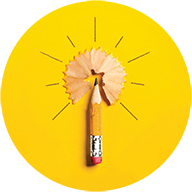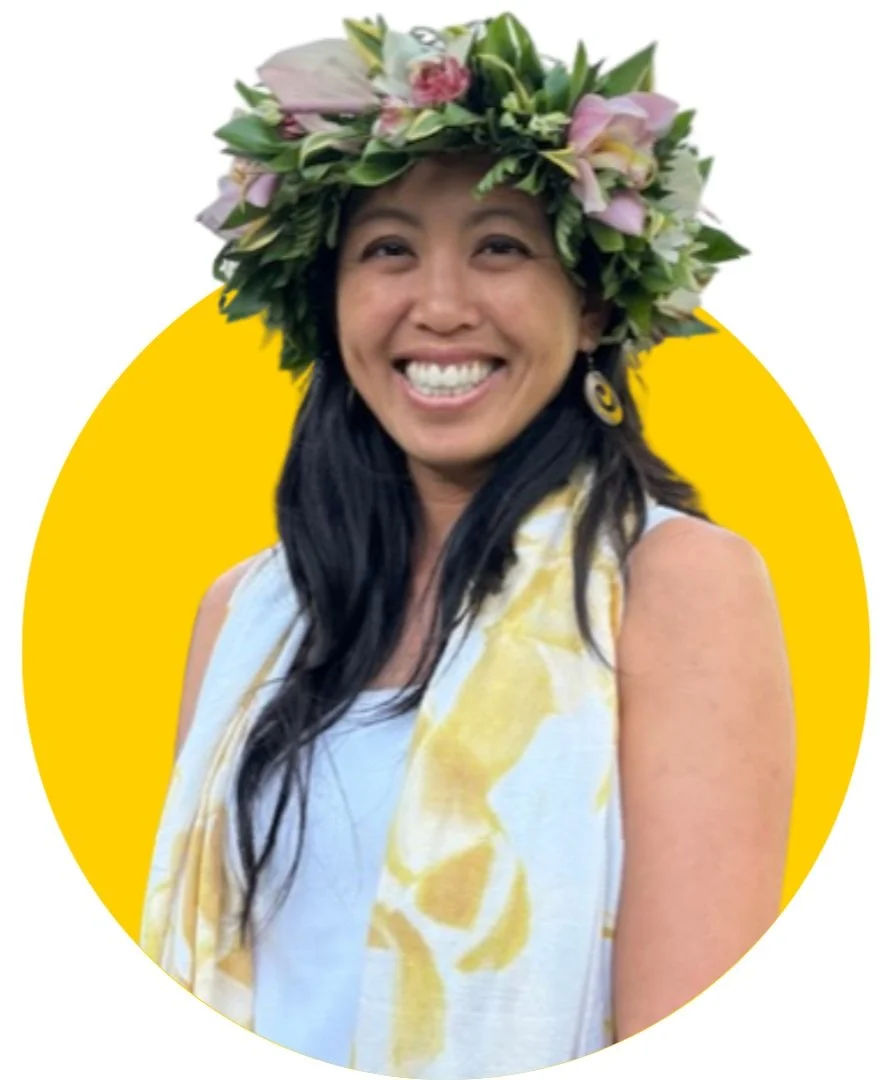Lianna Lam
“I approach education with a systems mindset, grounded in values of aloha (love) and pono (balance and hope), integrating my passions for science, community, and problem solving.”
Q: Name | Location | Years in Education
Lianna Lam | Kaimukī, Honolulu, Hawaii | 15 years
Q: Tell us the story of your journey to becoming an educator. What are the significant waypoints along that path?
I was fortunate to spend my foundational years at Ahuimanu Elementary School, nestled at the foot of the beautiful Koʻolau mountain range. Recess meant being outdoors, surrounded by natural beauty and gentle rains, which nurtured my deep connection to Hawaii’s environment. I think of Ms. Kimura, our “gifted and talented” teacher, and the phrase “loved into being” comes to mind. She was an early advocate of experiential, student-centered, project-based learning. In 5th grade, she secured a grant for a VHS video camera, and we created our own episode of Super Book, a playful homage to Reading Rainbow. We collaboratively wrote scripts, composed songs, and shared book reviews. That experience remains vivid and continues to inspire my approach to teaching, giving me the courage to create similar, student-centered projects.
A major turning point came when I left a career in environmental engineering to pursue teaching. I enjoyed solving environmental problems and designing sewer and water systems, but my favorite days involved mentoring interns, organizing conferences, and planning field trips. With my family’s encouragement, I found teaching to be the perfect avenue to express my love for nature, learning, and community-building.
“Today, I consider myself an engineer of relationships, fostering learning and positive impact within communities. I approach education with a systems mindset, grounded in values of aloha (love) and pono (balance and hope), integrating my passions for science, community, and problem-solving.”
Two of my most recent waypoints include serving as Board Chair for a local charter school during the COVID pandemic and, last year, stepping in as a temporary Vice Principal. Both experiences were deeply humbling and taught me so much about myself—the strengths I bring to a team and the areas where I can continue to grow. I’ve gained a renewed appreciation and profound respect for everyone in administrative roles!
Q: Who inspired you (friend, family, coach, mentor, guide, sponsor, advisor) to become an educator, and/or get involved in education?
I am grateful for the many mentors who guided me! My mom, with her positivity and openness, taught me the power of organization and joyful gatherings. From her, I inherited a strong work ethic and warmth. My elementary teacher, Aunty Karen Kimura, embraced inquiry and encouraged us to explore our passions, like my first science fair project on guinea pigs’ favorite foods! She remains a cherished influence in my life. Finally, Frank Fernandes, a mentor for 15 years, has been a steadfast guide. He hired me as a first-year teacher and supported me as I grew in roles from Science Teacher to STEM Coordinator and Vice Principal. Frank exemplifies leadership with aloha—always kind and encouraging, even when delivering tough news. His dedication over 38 years as Principal inspires me to live with intention and a deep commitment to vision.
Q: When (and where) do you feel you are most likely to succeed as you practice your educational art, and your educational craft?
Kaimuki Middle School feels like my second home, the place that shaped me as a student teacher. It is part of the community where we are raising our family and I hope to continue serving families in this area. I am committed to nurturing aloha in public schools, especially given the historical context of Hawaii’s Department of Education’s role in deculturizing Hawaiian identity during colonization. I am excited to contribute to a movement that rekindles Hawaiian values like aloha ‘āina to foster sustainable and meaningful learning.
Q: What are the skills you feel most confident using in your life, and work in education?
“I am very confident in my ability to invite and cultivate the gifts in others. I try to use that gift to weave relationships within communities, connecting people with shared purpose and intentionality. Living authentically carries me to brave spaces and exciting adventures with a shared purpose!”
Q: What are the most significant challenges you are working to overcome as you define what school could be?
I’m working on time management and building confidence in public speaking. My strength and shadow is optimism and the projects I say yes to sometimes require more time than I anticipated. It’s been humbling! Gathering groups for shared purpose provides lots of opportunities to practice public speaking. I still get so nervous. I am learning how to ground myself in this space and surf the excitement. I’m learning that nervousness comes from putting too much pressure on myself and the antidote is creating a sense of belonging for myself and others, no matter where I am. I’m learning to build my own safe spaces and offer abundant grace to myself as I learn to navigate these spaces.
Q: Describe some of the most rewarding moments in your time in education; those crazy days when you knew you were having an impact...and it felt really good.
Brave spaces when I ask for feedback (often when I think I am totally bombing), and discovering I’m a favorite teacher because of my smile, kindness, and positivity. Recently a challenging student stayed late after class after designing a ti leaf propagation science experiment. He expressed with a smile, “You know. I think I might just learn something from you this year.” We also hosted our first community garden workday and a dear friend took professional photos of the event. The expressions of the children and families joyfully planting ti leaves for our community filled my heart!
Q: What do you most want to learn from this global online community of your fellow educator-leaders?
I am curious as to how they stay resilient when navigating the complexities of our public school system. What is their resiliency process or map? How do they cultivate aloha for self and others…bridging gaps in this divisive world to help people work towards ʻauamo kuleana collective transformation through individual excellence?
Q: What is something quirky that you love about yourself and would help other community members to get to know you?
I love to read and garden. I love to read about love…how to love better. The types, depths, and layers of love. Spiritual ecology and aloha ‘āina are current fascinations. Time in the forest or the lo’i are my happy places!
Q: Ben Franklin supposedly said, "Early to bed, early to rise makes a man healthy, wealthy, and wise." You might think Ben was full of baloney, but we are wondering when YOU are most awake, alive, productive, creative, and/or reflective. Early morning, late at night, some other time?
Morning, 8:00am - 11:00am! I love to wake early, reflect on my dreams, exercise outdoors, eat a nourishing breakfast, and get to work!
Q: Cold night, snow out, warm fire, hot beverage, or hot day, white sand beach, shorts and slippers, cold beverage?
Golden hour (early morning or late afternoon) in the forest with tea.
Q: The coolest thing that happened to me today (the day I am filling out this form) was…
We found out we were awarded a grant from the DOE Office of Hawaiian Education to build our kipuka outdoor learning space and cultural garden! Also, the engineering high school class will help us design and cut wood to create accessible raised garden beds so kids with wheelchairs and disabilities can participate in experiential learning too!
Q: Putting on your futurist cap: What might your school/learning spaces (or “schools” in general) look and sound and feel like in 25 or 50 years?
In Hawaiʻi, neighborhood schools as community resiliency hubs. In blue skies, sustainable places that cultivate aloha ‘āina through food sustainability, clean energy, and experiential, service, and place-based learning. Neighborhood public schools use land in service of the community as places of gathering and connection, not just academics. In gray skies and gathering places and resource distribution sites for climate emergencies.
Q: And finally, what do you think is the purpose of education? (Clearly not a small question, but we hope you enjoy responding!)
The purpose of education…to help people develop their divine gifts and discover their passions so they can lead a meaningful life empowered in aloha ‘āina.

